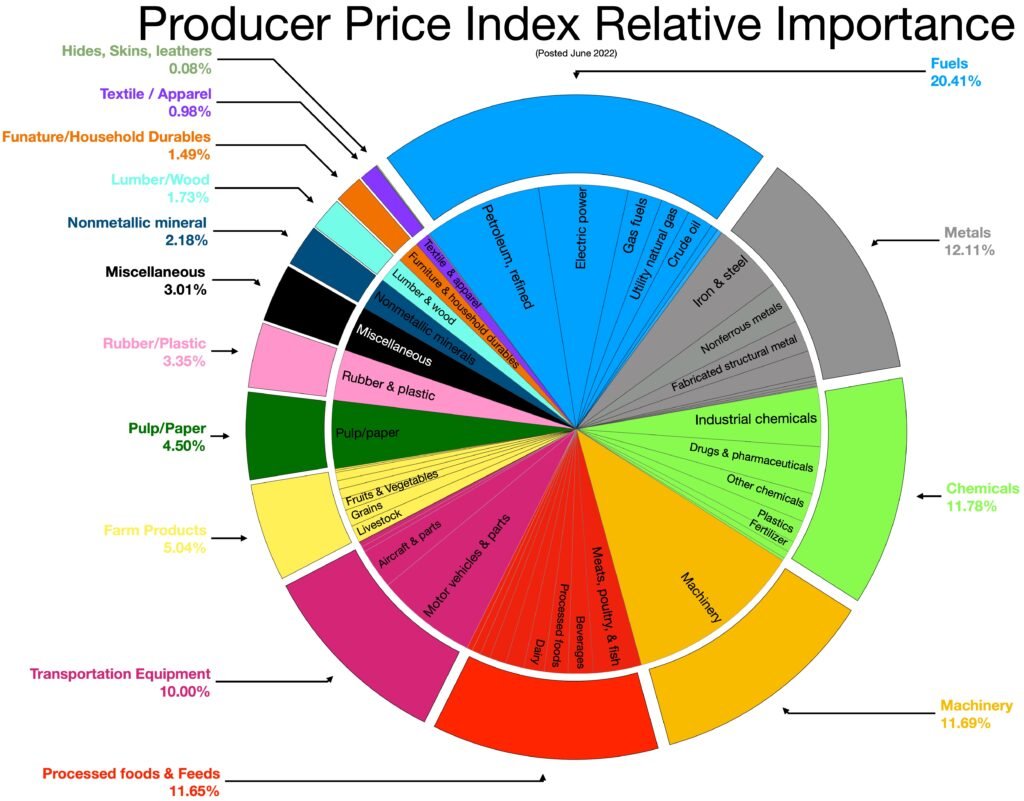Producer Price Index (PPI) inflation delivered a shocking blow to economic optimism today, surging 0.9% in July after a flat reading in June, marking the largest monthly increase in over three years. This dramatic acceleration in wholesale prices, which far exceeded the expected 0.2% increase according to Dow Jones consensus estimates, signals that companies are passing along higher import costs related to tariffs, setting the stage for broader consumer price pressures in the coming months.
Why This PPI Surge Matters More Than Previous Increases
The July PPI reading represents a fundamental shift in inflationary dynamics that could reshape Federal Reserve policy and consumer spending patterns. Services prices advanced 1.1 percent while goods increased 0.7 percent, demonstrating broad-based pressure across the economy rather than isolated sector spikes.
Costs were sharply on the rise for producers and manufacturers in July, a sign that higher prices could soon filter down to American consumers. This transmission mechanism from wholesale to retail prices typically occurs with a 3-6 month lag, suggesting consumer price acceleration is inevitable barring significant economic disruption.
BREAKING: July PPI inflation falls to 2.2%, below expectations of 2.3%.
— The Kobeissi Letter (@KobeissiLetter) August 13, 2024
Core PPI inflation falls to 2.4%, below expectations of 2.7%.
In another constructive sign, PPI inflation is now at its lowest level since March 2024.
A September rate cut is on its way.
Tariff Reality: The Economic Experiment Backfires
The surge directly validates economists’ warnings about tariff policy consequences. US wholesale inflation accelerated by the most in three years, suggesting companies are passing along higher import costs related to tariffs. This represents a critical inflection point where businesses can no longer absorb increased costs through margin compression.
The broad-based nature of increases is particularly concerning. Increases in securities brokerage, diesel fuel, data processing services, portfolio management, and traveler accommodation services outweighed decreasing indexes for natural gas and building materials. This diversity indicates systemic pressure rather than temporary supply chain disruptions.

Federal Reserve Dilemma: Between Growth and Inflation
This PPI surge creates an impossible situation for Federal Reserve policymakers. Markets are pricing virtually no chance of a rate cut when the Fed meets, and have been reducing odds for a September move. The central bank now faces the prospect of maintaining restrictive monetary policy precisely when economic growth shows signs of vulnerability.
Fed officials remain cautious about the impact tariffs will have on inflation and believe the U.S. economy is strong enough that they can wait to see impacts before acting on rates. However, today’s data suggests that patience may no longer be viable, as inflationary pressures are accelerating beyond control.
Consumer Spending Reality: The Coming Squeeze
The 12-month picture reveals the extent of building pressure. On an unadjusted basis, the index for final demand moved up 3.3 percent for the 12 months ended in July, indicating persistent inflationary momentum that will inevitably impact consumer purchasing power.
This acceleration comes at a particularly vulnerable time for American households already dealing with elevated housing costs, insurance premiums, and energy prices. The combination of higher wholesale costs and persistent service sector inflation creates a perfect storm for reduced consumer spending.
Market Implications and Investment Strategy
Bond markets face immediate repricing pressure as inflation expectations reset higher. The 10-year Treasury yield will likely test recent highs as investors demand increased compensation for inflation risk. Equity markets may initially decline as profit margins face compression from higher input costs.
Sector rotation toward inflation-resistant assets becomes crucial. Real estate, commodities, and companies with pricing power offer better protection than growth stocks dependent on low interest rates and expanding margins.
Economic Forecast: Stagflation Concerns Mount
The combination of slowing economic growth and accelerating wholesale inflation raises legitimate stagflation concerns not seen since the 1970s. The largest 12-month rise since moving up 3.8 percent in February 2023 demonstrates momentum that will be difficult to reverse without significant economic cooling.
This PPI surge suggests that the Federal Reserve’s inflation fight is far from over, potentially requiring more aggressive monetary tightening that could trigger the very recession policymakers have been trying to avoid. The coming months will test whether the American economy can withstand this dual pressure of rising costs and restrictive monetary policy without experiencing severe economic disruption.
